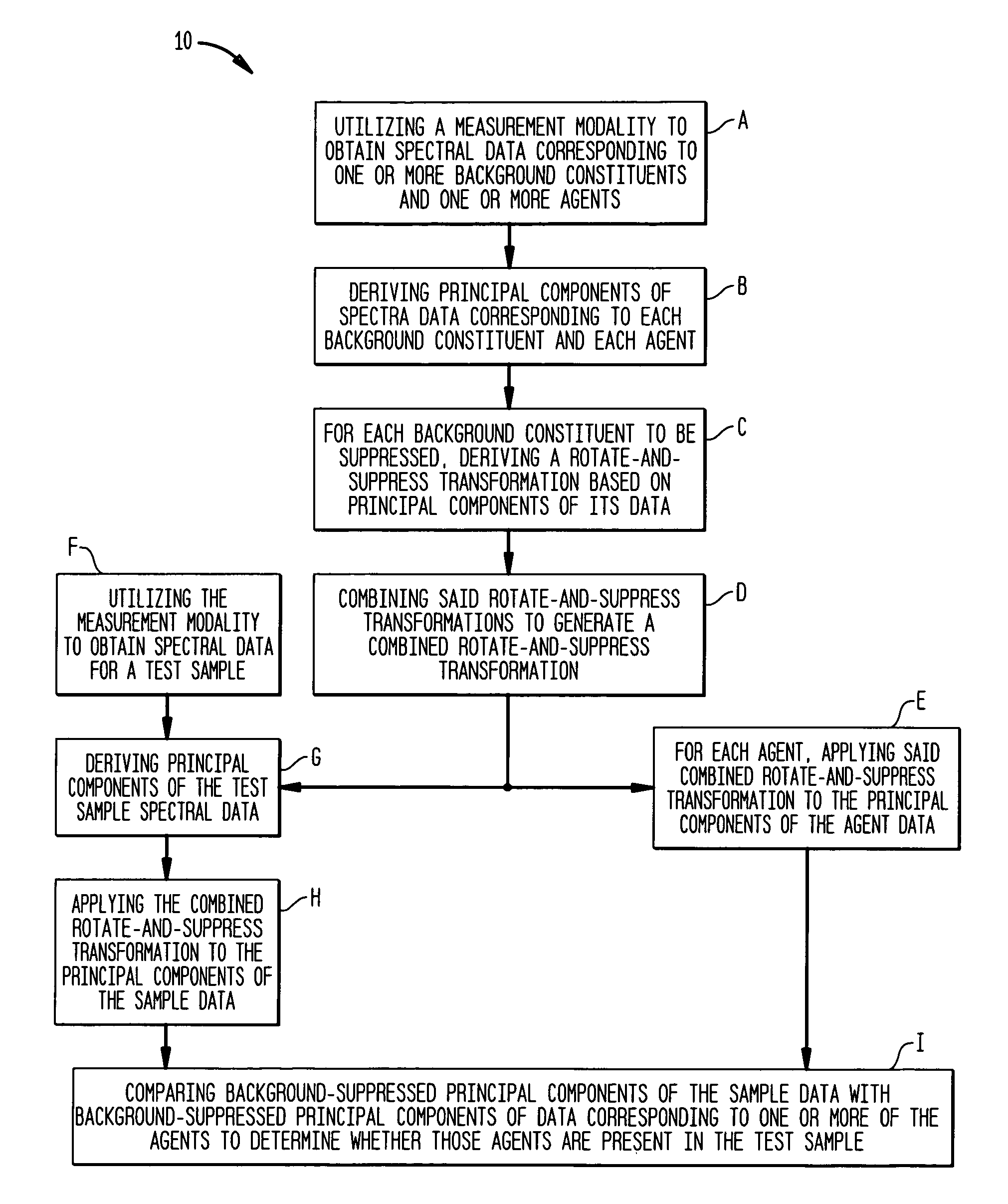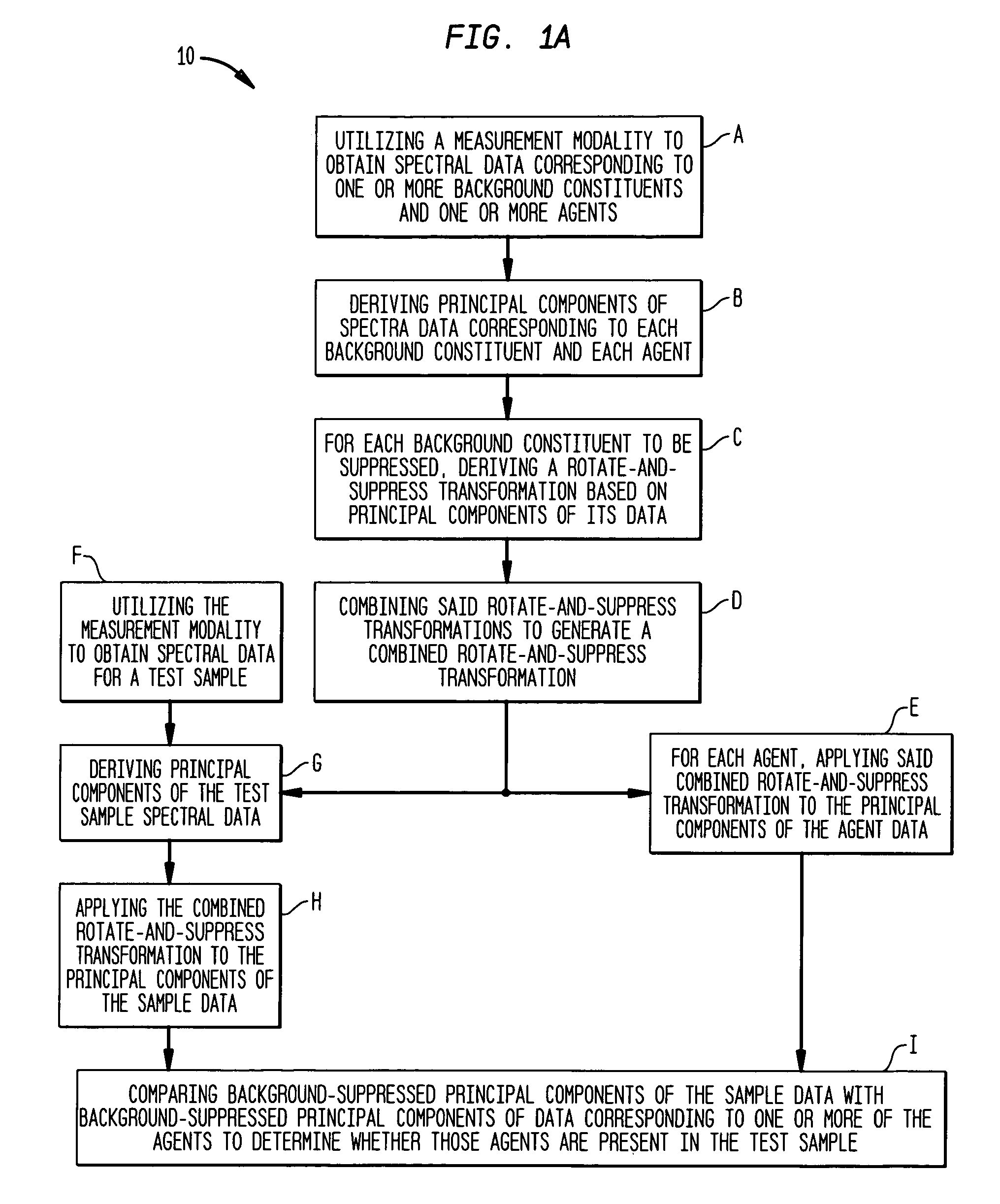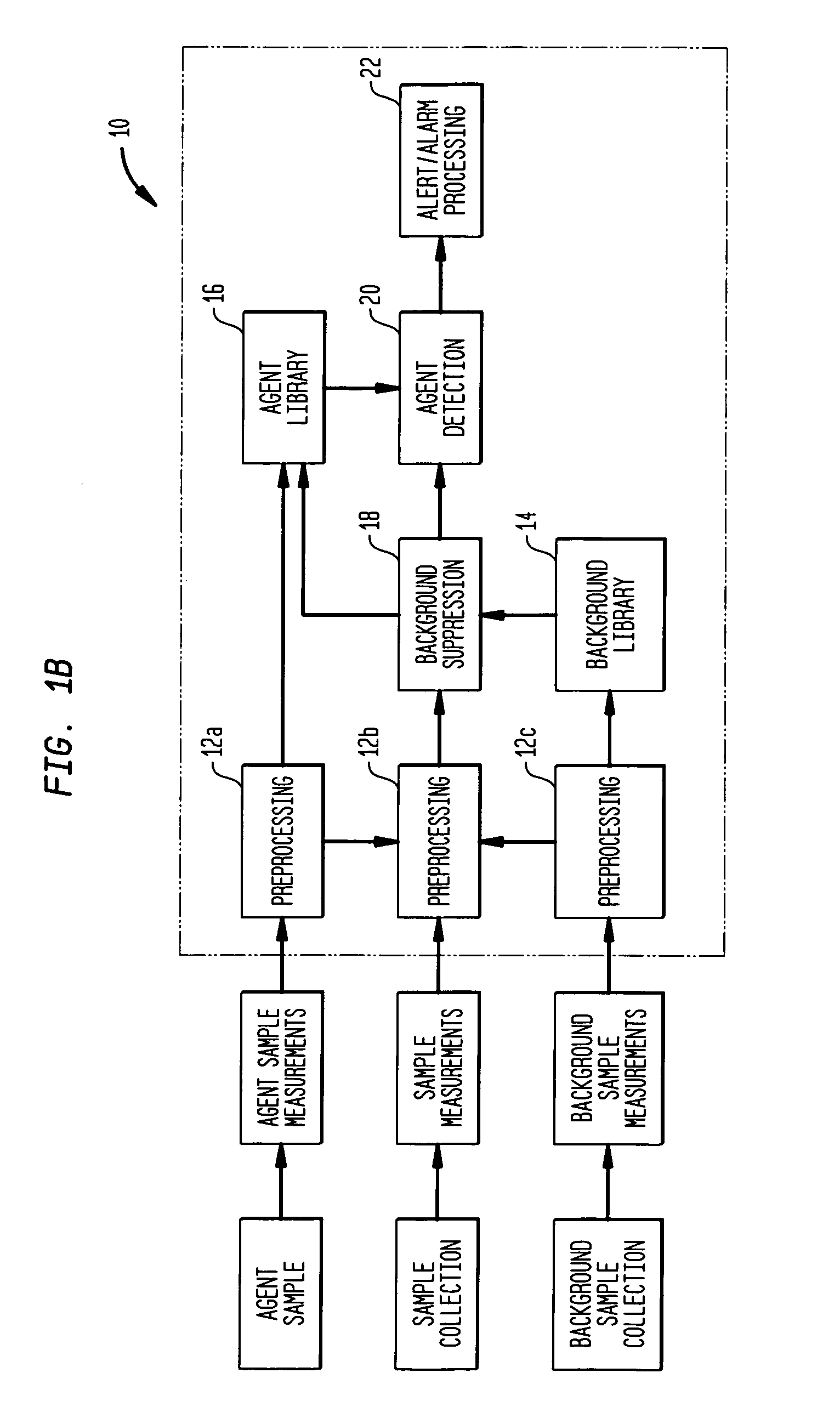Agent detection in the presence of background clutter
a technology for agents and background clutter, applied in the field of agents detection methods and systems, can solve the problems of increasing detection problems, affecting the detection accuracy of agents, so as to improve detection accuracy, reduce cost, and increase the type of signature
- Summary
- Abstract
- Description
- Claims
- Application Information
AI Technical Summary
Benefits of technology
Problems solved by technology
Method used
Image
Examples
example
[0071]A simple numerical example will further illustrate the operation of the Rotate and Suppress method according to the teachings of the invention. In this example, the agent and background vectors are defined in three-dimensional space, and the suppression of the background vector results in a two-dimensional space. Assume that the Principal Components of a background constituent and two agents of interest are specified by:
B1=[3,4,5]
A1=[1,0,2]
A2=[1,2,0]
Application of the first rotation results in setting the first component of B1 to zero. More specifically, the following rotation matrix rotates all of the first component of the background into the second component:
[0072]R1=[4 / 5-3 / 503 / 54 / 50001]
and the resulting rotated background vector is given by:
[0073]B1′×R1×B1T=[055].
In the second rotation, the second component of B′1 is set to zero, without reinserting any signal into the first component. This second rotation matrix is given by:
[0074]R2=[10002 / 2-2 / 202 / 22 / 2]
The combine...
PUM
 Login to View More
Login to View More Abstract
Description
Claims
Application Information
 Login to View More
Login to View More - R&D
- Intellectual Property
- Life Sciences
- Materials
- Tech Scout
- Unparalleled Data Quality
- Higher Quality Content
- 60% Fewer Hallucinations
Browse by: Latest US Patents, China's latest patents, Technical Efficacy Thesaurus, Application Domain, Technology Topic, Popular Technical Reports.
© 2025 PatSnap. All rights reserved.Legal|Privacy policy|Modern Slavery Act Transparency Statement|Sitemap|About US| Contact US: help@patsnap.com



